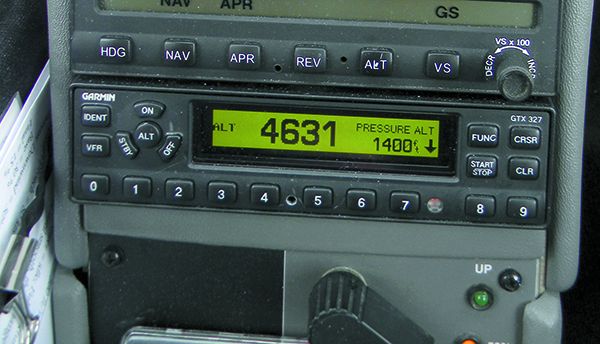MORE ON TRANSPONDERS
In the Mode C transponder upgrade article in the June 2021 issue of Aviation Consumer, Larry Anglisano mentions Mode C units for “aircraft [that] just don’t need ADS-B.”
Sorry, Larry, but the ones that don’t need ADS-B are the ones that never leave the ground. See and avoid is a nice concept but, for me, backing it up with audio traffic alerts from ForeFlight makes flying much safer. ADS-B is a cheap collision-avoidance system and should be in every aircraft.
Face it, the pilot who is plummeting to earth after a midair is not going to be thinking about the two grand he saved by not installing a simple uAvionics tailBeacon ADS-B Out system, as one example.
David Abrams – via email
In your transponder upgrade article, you didn’t mention Garmin’s GTX 330 Mode C/S unit. I know the article was strictly about Mode C units and nothing more, but wouldn’t the upgradable GTX 330 make better sense than a GTX 327 for some?
Luca Bencini – via email
Luca’s talking about the GTX 330’s potential for upgrade to the “ES” model, which makes it ADS-B compatible when interfaced with a compatible WAAS GPS.
While Garmin has discontinued the GTX 330, it still offers a $1600 factory upgrade to a 1090ES version. On the other hand, buyers shopping for a Mode C unit likely already have ADS-B in the first place. Still, we’re pleased to see Garmin with an upgrade path for these units. It sold a lot of them in the age of the GNS navigators.
LIFE RAFTS
In your next look at the market for aviation-caliber life rafts, please consider the practicality of, in a rushed and panicked ditching, getting that thing out of the cockpit and in the water.
My opinion as a Cessna 210 pilot who flies over a lot of water: It doesn’t matter the features, the reliability or the manufacturing quality if my scared passenger (think about it, the raft is not in arm’s reach of the pilot) can’t haul it over the back seat and then out the door first, before exiting. Weight is really all that matters.
I’m a longtime reader—keep up the good work.
Matthew Running – via email
Actually, we’re planning a life raft roundup for an upcoming issue. If anyone has a model that’s worked, we want to hear about it.
We agree, weight and maneuverability are important, but so is serviceability. We’ll cover that aspect, too.
GNS 430 SHUTDOWN PROCEDURE
I have a Garmin GNS 430W navigator installed in my panel and have a question concerning the best way to prolong its life. Most owners/operators I have encountered switch their avionics radio stack on and off using the avionics master, which is the same as pulling the plug from the wall on a computer. I notice that when I turn off my GNS 430W using the on/off rotary knob, the unit goes through a shutdown sequence before powering down. When I turn it off via the avionics master it does not shut down in this controlled manner.
My question to you is am I harming the unit in any way by turning it off by chopping the power abruptly with the avionics master, or am I causing more harm to the unit by working the on/off knob more by using it to power up and power down? I have received differing opinions from multiple sources, so figured I’d ask you. What would you do?
Darrell Klein – via email
We’ve always used the avionics master switch, but we asked Garmin. According to its field support folks, there is nothing wrong with powering it off and on (and most any other avionics system) with the avionics master switch. We think it could prolong the life of the pricey on/off switch.


